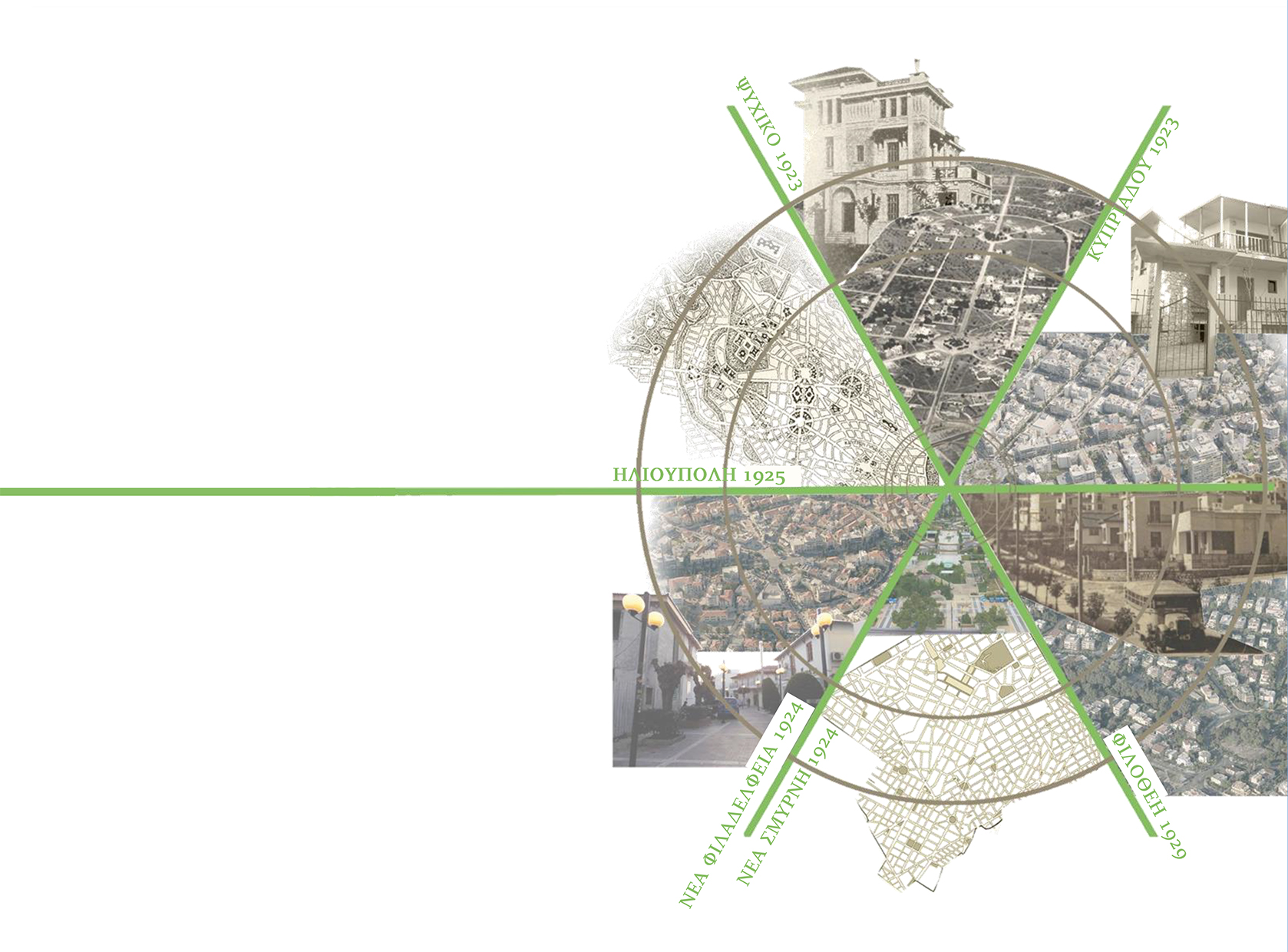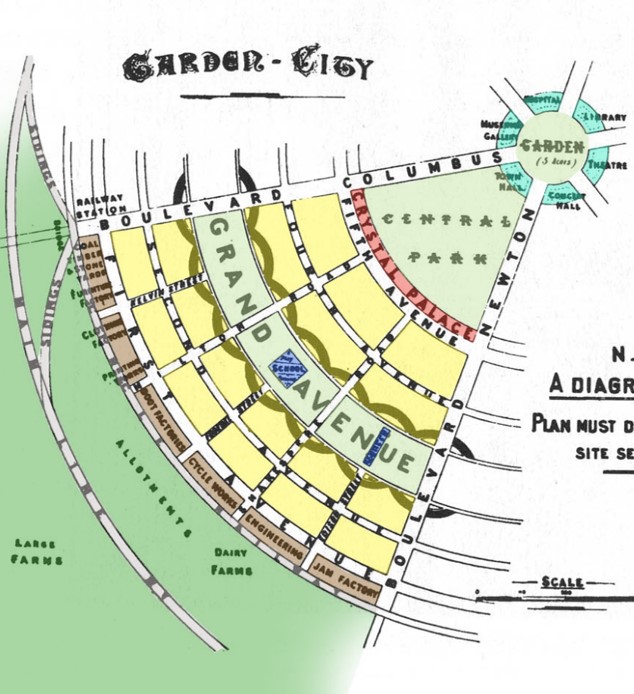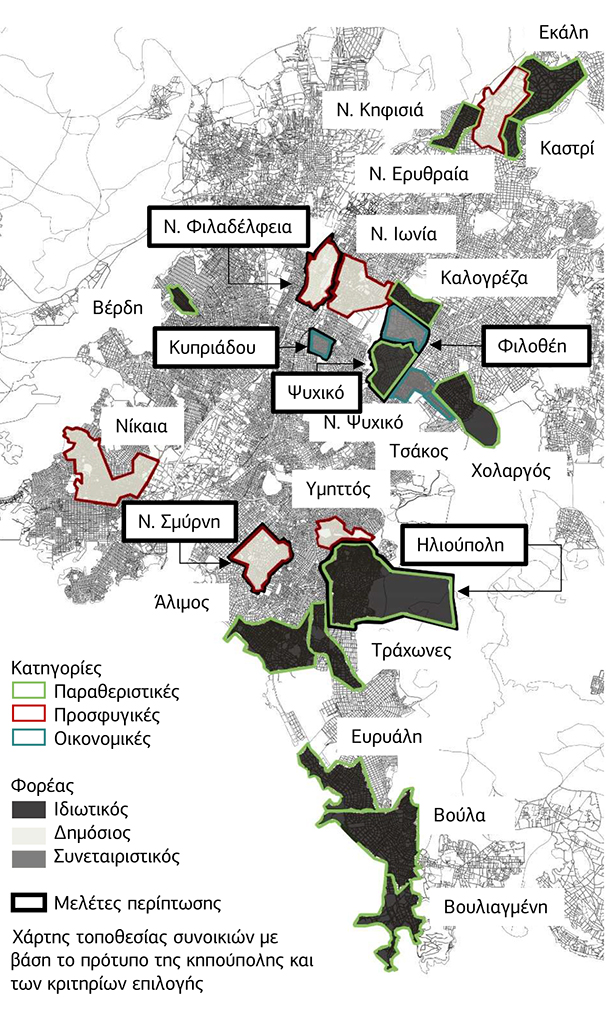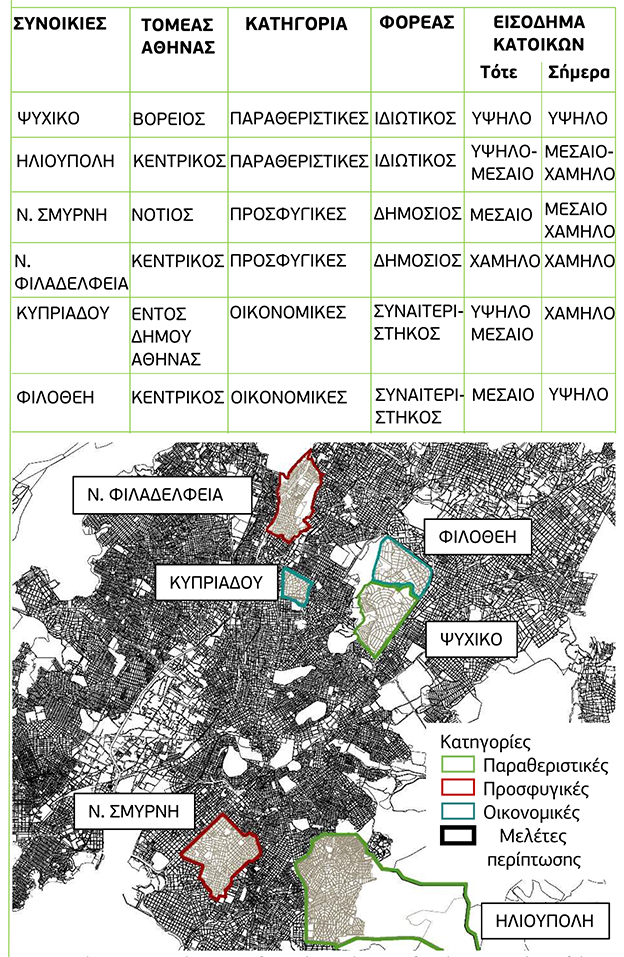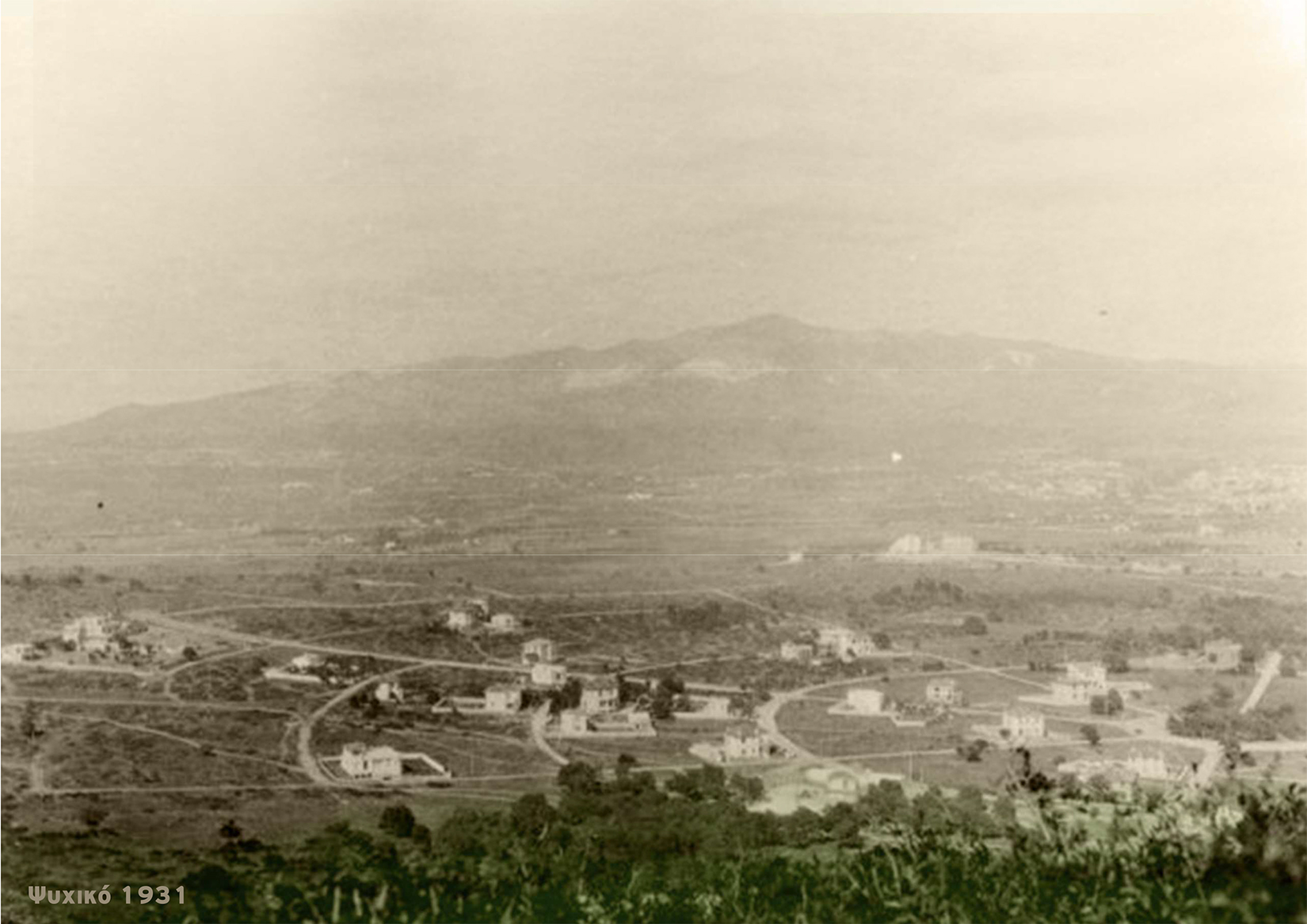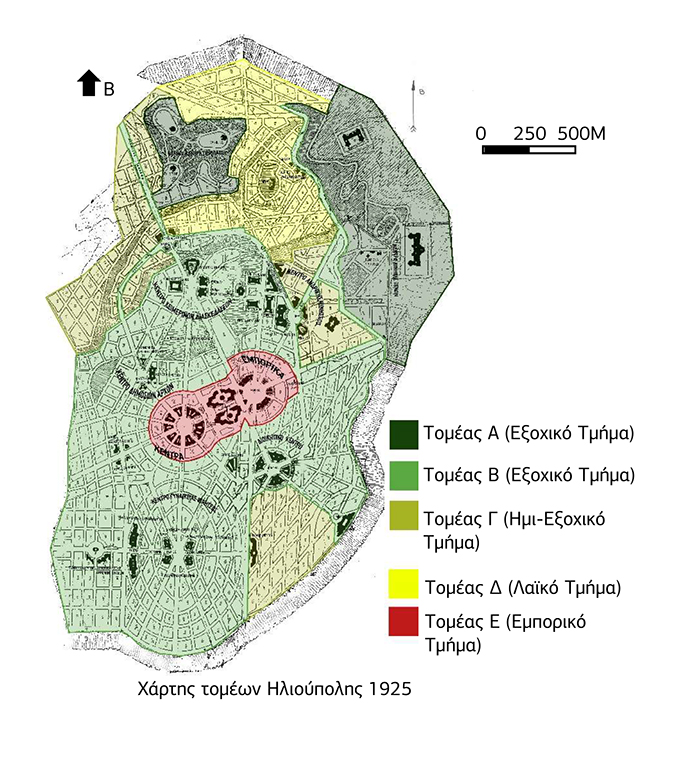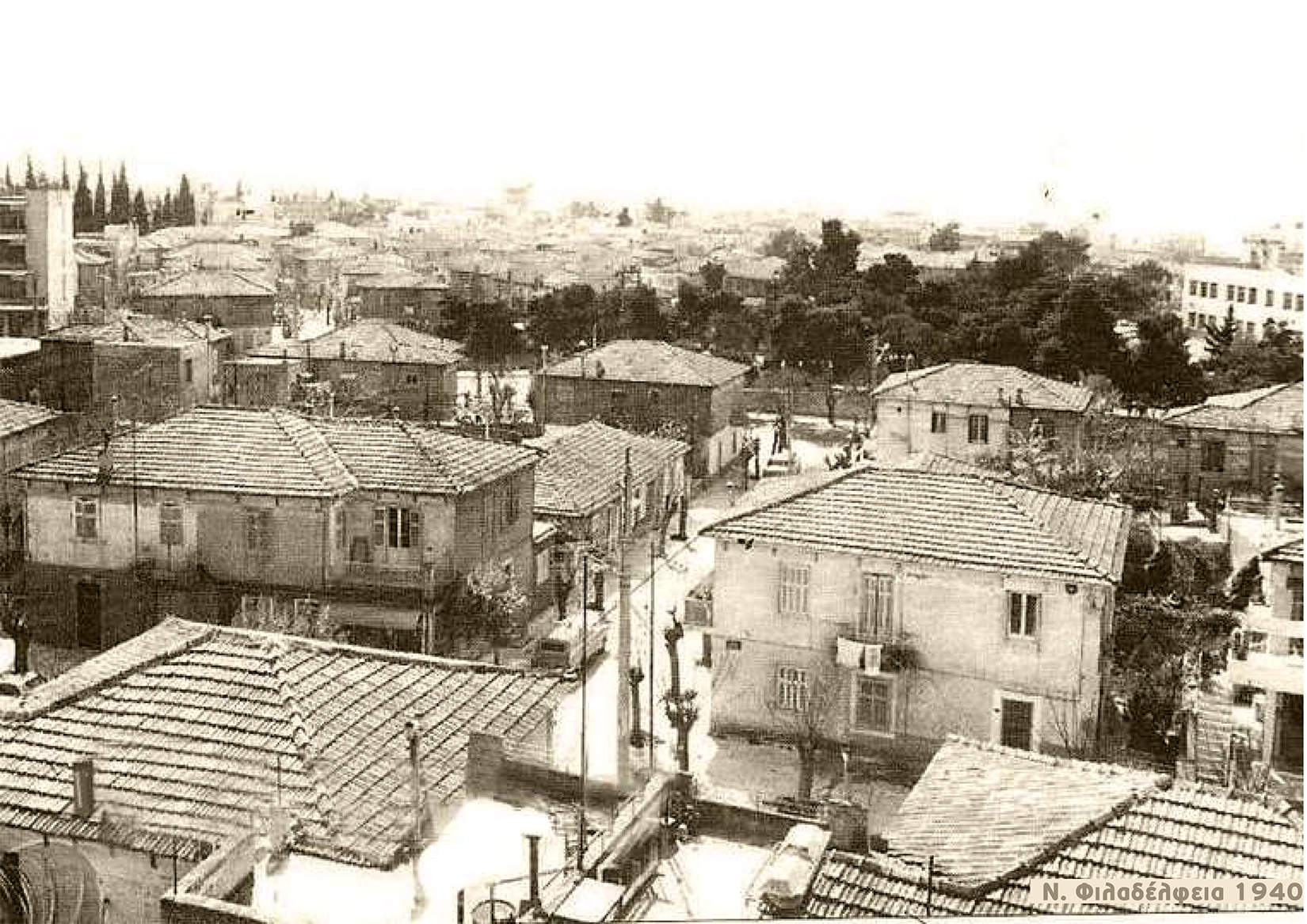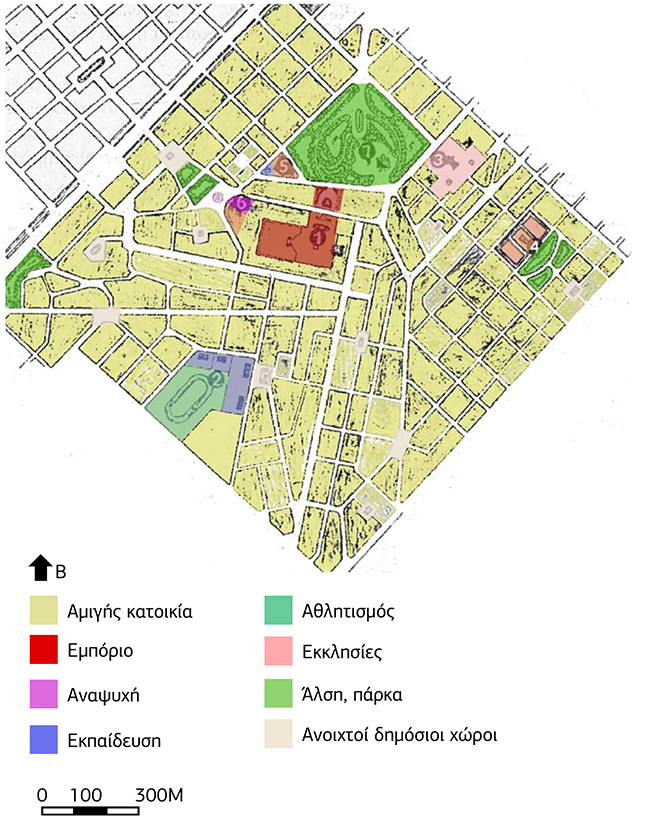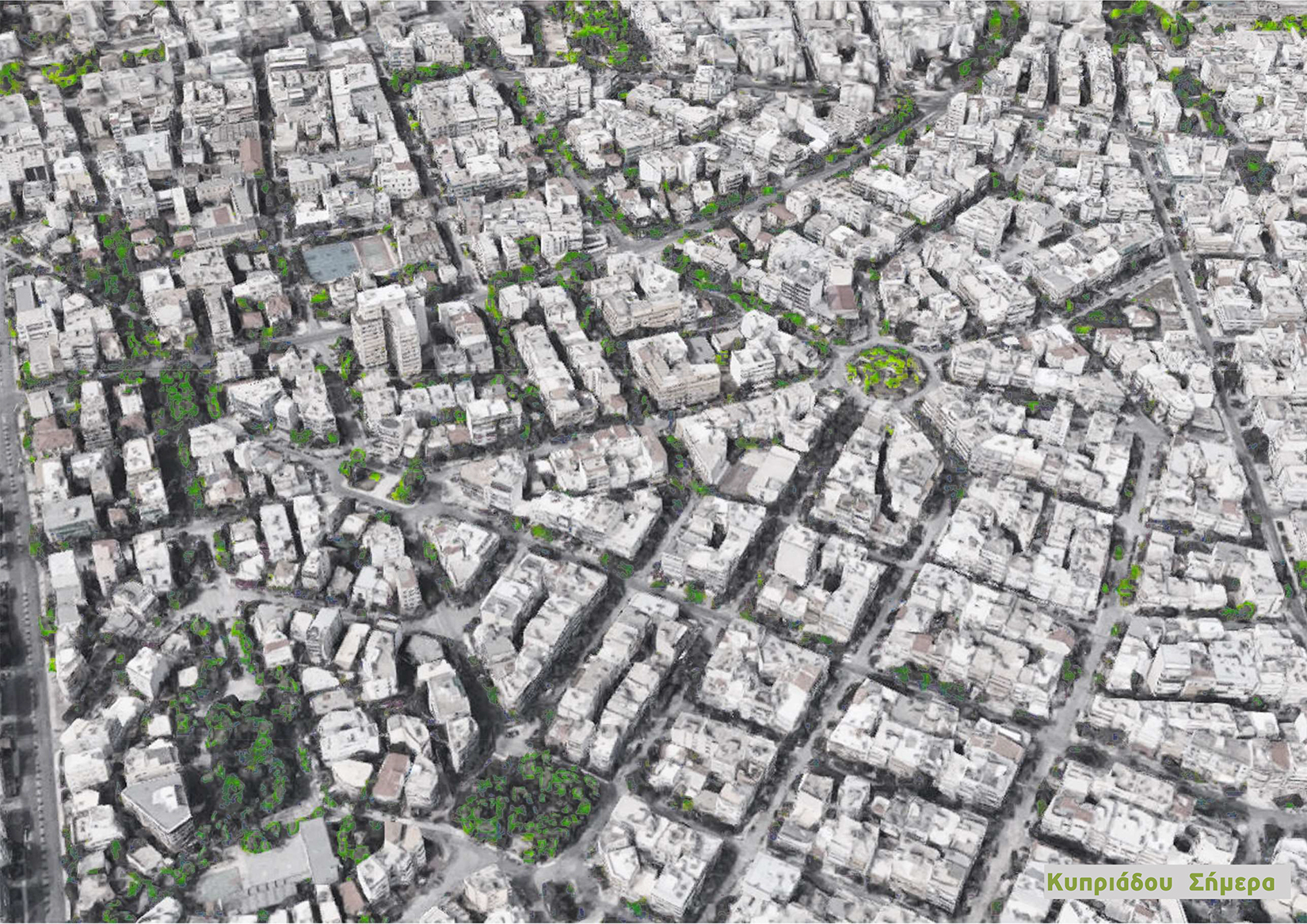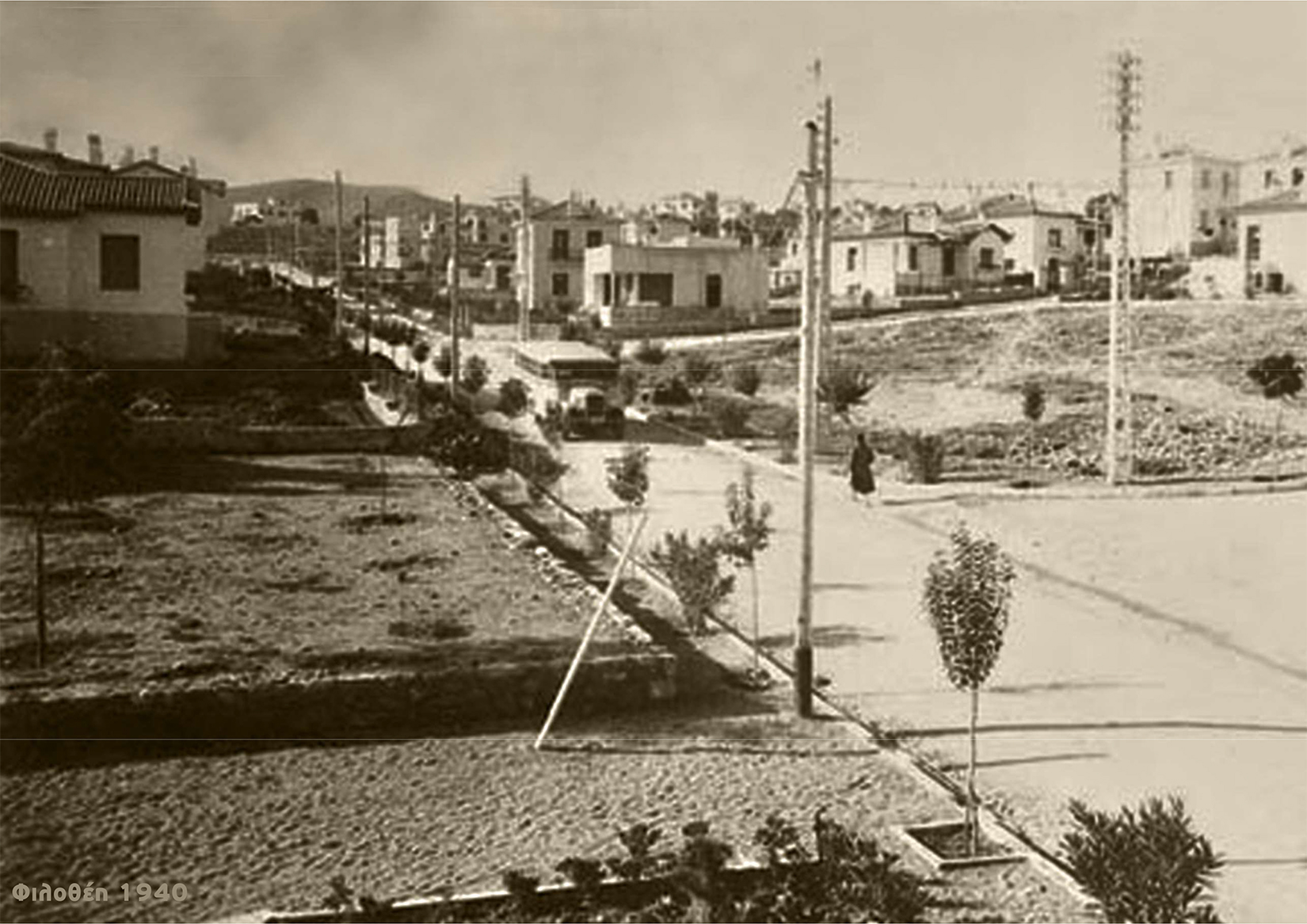This research is constituted by three main chapters. In the first chapter, the main purpose is the analysis of the origins and the theoretical background of garden citys model. Furthermore, the research describes the practical applications of garden citys model and its diffusion into the Greek, European and global cityscape, during the 20th century.
In the second chapter, the research describes the models influence on the urban fabric of Athens, during the interwar period, in which is the model is most frequently used in the planning of Athenian districts. Firstly, the research focuses on the reasons for its development in relation to the economic and social background of the capital during this period. In addition, there is an analysis and study of all Athenian districts, where the pattern has left its traces up to date. In order make an in–depth research, 6 case studies of districts are analyzed, based on their social stratification, the responsible organization that undertook their reconstruction and the extent of the preservation of the districts planning principles today. Specifically, two resort districts are selected, Psychiko and Ilioupoli, two refugee districts, Nea Philadelphia and Nea Smyrni and Kypriadou and Filothei, districts that hosted public and private employees. The research studies their establishment, their first plan, their evolution and their current planning and character.
In the third chapter, firstly the research draws a conclusion regarding the whole influence of garden cities model. Secondly, the research aims to evaluate the degree of preservation of the street planning, the construction rules, the road network, the ground floor uses, the housing typologies and the green and free space network today. Finally, the study attempts an analysis of the residents’ and the initial districts’ planning principles’ role in the evolution and today’s character of the districts.
-
Find out more about this work through this link.

